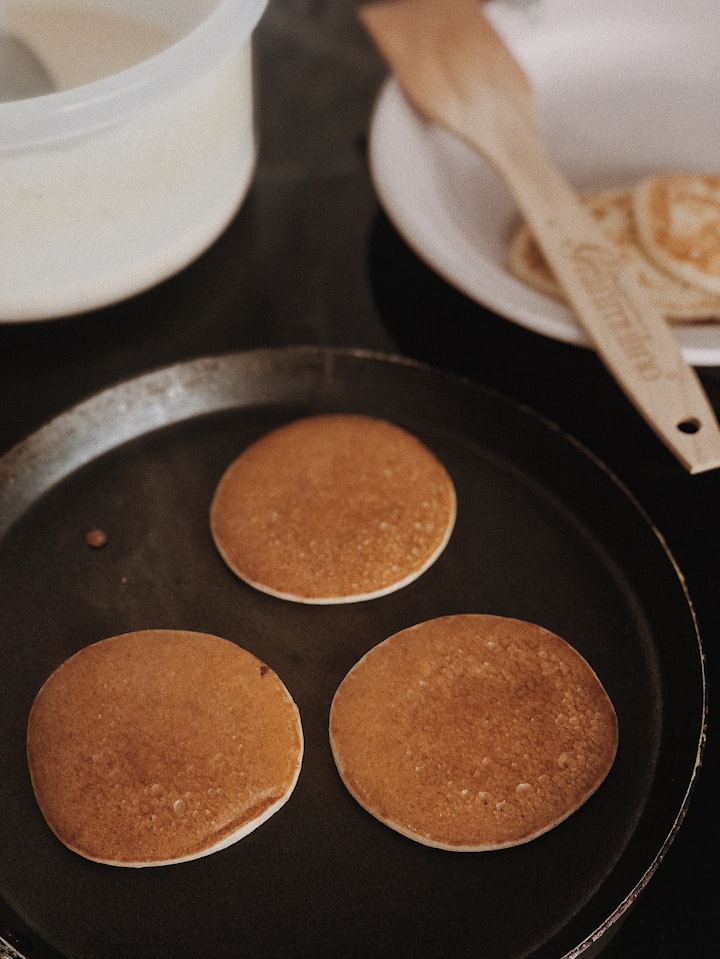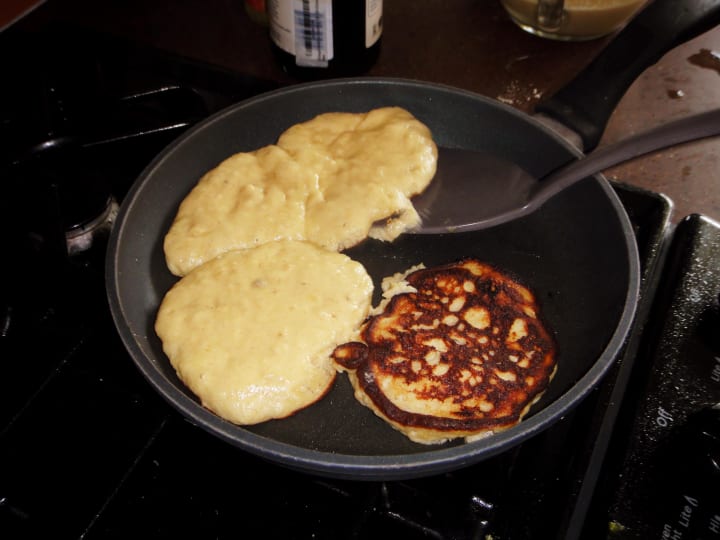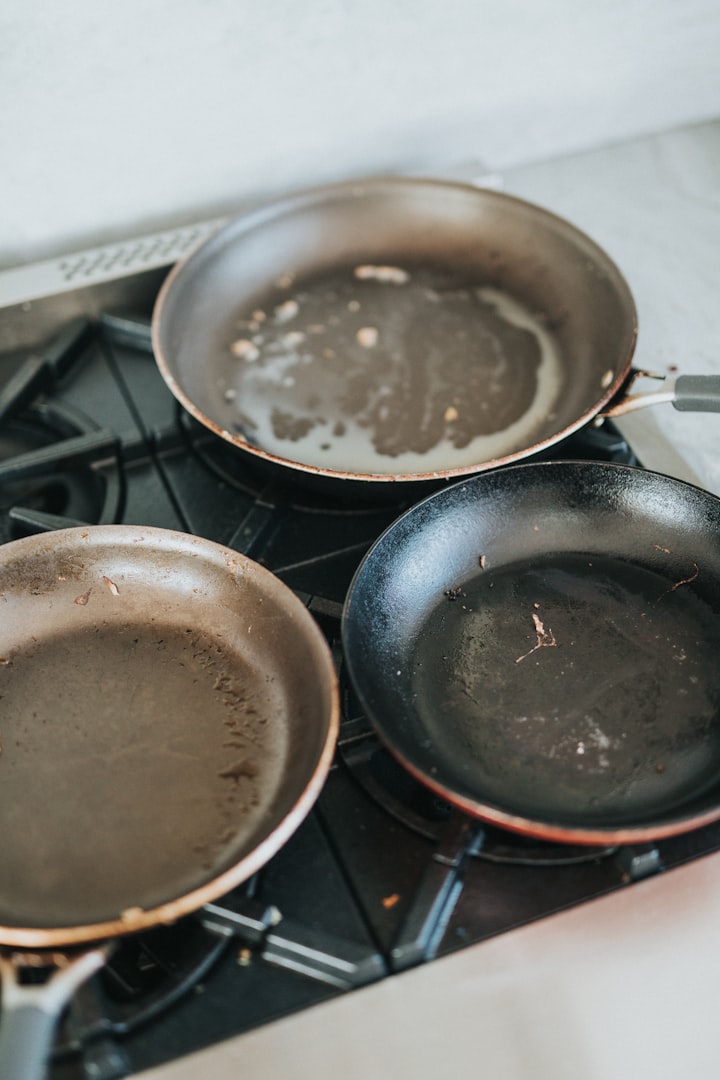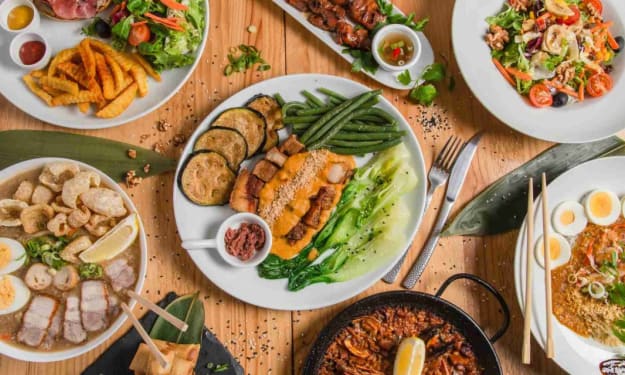What I Learned from Pursuing the Perfect Pancakes
Once you've tasted perfect, there's no going back.

Pancakes are the best. They require no real cooking talent to make. Given the right instructions and some supervision, even a toddler can prepare them. And unlike other breakfast meals, such as waffles or bread, you don't need to buy or operate any special equipment.
You can go creative with every element of the pancakes. This is why pancake-making can be such a rewarding experience. Not just the topping, but also the batter, the sizes, and the thickness.
Plain with butter, blueberry, banana slices, strawberries, log cabin syrups, homemade syrups, keto chocolate syrup, jams, spreads, extra whipped cream, drenched in yogurt, topped with ice cream, sprinkled with raisins, peanut butter, apple butter, any type of butter really, fried chicken!
How to Make Pancakes
It's important that you find a recipe that works for you, that you can follow, and that uses ingredients you have access to. There's a ton of recipes online that you can try your hands at. You can make great pancakes with as little as three ingredients (flour, eggs, ripe bananas) or go for an Ana Olson-style fancy souffle pancake turnover with ice cream filling (it's possible!), homemade whipping cream, and fresh fruit compote.
But if you want your pancakes perfect every time, there are some things you need to be mindful of.
1. Don't go crazy with the mixing.
Pancake recipes almost always tell you not to "overmix" the batter. You want the dry and wet ingredients to mix well together. And then to just stop there.
If you continue to mix and mix and mix, you'll deflate the air bubble that's been developing in the batter. Or, if you're not using GF (gluten-free) flour, your batter will develop gluten. It will become somewhat dough-like, hard, and chewy. Keep this in mind, even when using a store-bought pancake premix.
Some recipes say to stop when there are still a few lumps of flour, and some others say to avoid them as much as possible.
2. Rest and test.
A lot of us don't have much time to get ready in the mornings that we often rush through a pancake mix without giving the batter enough time to rest. It takes at least 10 minutes (20 minutes says Good Housekeeping) to soften the flour. But who has that kind of time?
Making the recipe ahead of time or leaving it overnight is one way to make sure the batter is chilled and thoroughly hydrated.

Even with all the preparation, my first one usually gets burnt. They don't say it in most pancake recipes, but the first flip almost always looks awful because it's a test pancake. It's the only way to find out if the heat is distributed evenly or not.
I make adjustments based on the test result. If it's too dense, I add more liquid. If too runny, a bit more egg whites or mashed banana.
3. Thin pans make burnt pancakes.
If diner pancakes taste a lot better, it's because they're cooked on a professional kitchen griddle. Not an ultra-thin, non-stick pan that generates uneven heat across the surface.

Using a better pan, one with a thicker bottom, will usually result in better-looking pancakes. But it might take a lot of burnt pancakes to find the best match.
4. Common mistakes.
A lot of things can go wrong when making pancakes at home. Sometimes they just taste weird or look a little off. To prevent complete failure, choose tried-and-tested recipes, use the right ingredients and cooking equipment, and avoid these crucial pancake-making mistakes.
Not using a whisk.
For the fluffiest pancakes, incorporate as much air as possible when mixing the wet and dry ingredients. A spoon or a spatula won't be able to do this. The right tool for the job is a large whisk.

Cooking at the wrong temperature.
The pan needs to be properly heated. In theory, if it's hot enough (but not smoking) the pancake will come out just right. However, I find that the result may differ based on a few factors, such as the type of pancake mix, freshness of ingredients, and cooking equipment.
Using regular butter.
Although some pancake recipes may call for butter, regular butter isn't the best kind to coat your pan with. You need vegetable oil with a high enough smoke point to withstand the medium-high heat without browning too quickly. To substitute for butter, some recipes call for ghee, margarine, or clarified butter, which is made by removing the milk solids and water from the butterfat.
Pressing down the pancake.
If you want fluffy pancakes that rise fully, don't do this. There's no need to press your pancake after flipping. These are pancakes, not burgers.

Some exceptions would be the types of pancakes that are intentionally pressed down, such as the Korean hot cakes, Hotteok.
Flipping too early or too late.
How do you know when it's time to flip your pancake? Once your pancake starts to bubble, ready your best performing, thin spatula and prepare to flip. When you see that the bubbles start to pop and turn to holes, that's when you do it.
Flip your pancake just once.
Alas, sometimes when you flip, you fail, and you just got to make the best of it. When my pancakes won't flip because the batter was perhaps too runny, I just improvise and fold them in half. (Or I quickly grab a second spatula.)

If the batter is too runny, spread them thinly across the pan for a crispier batch. When they're too dense, you can add a little more liquid.
Just enjoy the process and appreciate the efforts you've put into your masterpiece.
5. Know your flours really well.
If making the recipes from scratch, make sure that you know the type of flours you will be using. Some recipes will ask for a specific type of flour, but depending on where you are in the world, some types or brands might not be available.
It's hard to figure out which type of flours you need to keep at home if you haven't been trying out different recipes. You need to fool around a little and see what works for you.
Common types of flours to stock up for pancakes:
All-purpose flour
Most pancake recipes call for all-purpose flour. If this type of flour is available to you, this is what you should keep at hand. Just in case you need some pancakes in your life.

In many parts of Indonesia, it's not very common to see "all-purpose" labeled on flour. I usually substitute all-purpose with medium protein flour that I have access to. The medium protein flour is used in many common local pancake recipes, such as the martabak, poffertjes, kamir, and pukis.
Cake flour
Cake flours are also a good option because they result in lighter, fluffier pancakes. If you prefer not to buy, you can also make your own cake flour. For every cup of all-purpose flour you're going to use, replace 2 tablespoons with 2 tablespoons of cornstarch.
Wheat flour or maida
Another common type of flour to use for pancakes is wheat flour or maida. Because it's heavier than the regular flours, just add an extra 1/2 baking powder to compensate for the extra weight.
Rice flour

Many local pancake recipes in Southeast Asia are made with rice flour. Take a look at panekuk, surabi and bika in Indonesia, khanom krok in Thailand, serabi or kuih mayat in Malaysia, and the Burmese bein mont. This type of flour is suitable for a gluten-free diet, but in order to replace all-purpose flour with rice flour you might need to lessen the measurement.
The general rule is to use 7/8 cup (14 tablespoons) of rice flour in place of a cup of all-purpose.
Other types of flours

I've long stopped baking with wheat flour and started to incorporate more of the almond meal, oatmeal, cornstarch, and flour blends made from other plants, such as coconut, banana, rice, cassava, and various types of beans. With these types of flour substitutes, the mixture might get a bit denser.
It's important to find a recipe that you can follow at home. Some of the coolest GF pancake recipes I've found online include variations for different types of flour. But the common ones usually use almond flour, coconut flour, or oatmeal. So I stock up on these three as my regular go-to's.
Bookmark the recipes that work for you, or print them out for future reference. If all else fails, you can buy the pancake mixes that come in boxes.
About the Creator
Lovelli Fuad
A Riau-born full-stack freelancer. A storyteller, poet at heart, a short story writer in my own time. I'm published on Hubpages, Medium, and a Google local guide.
On a scale of $1 to $20, how attractive are you?






Comments
There are no comments for this story
Be the first to respond and start the conversation.